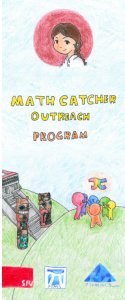In this TED talk, Carolyn Roberts talks about some of the Indigenous history, culture, and how to move forward in Reconciliation.
Roberts discusses the history of her family and how her three sisters and her mom went to residential schools. Her mom is unable to speak any of the languages from where she is from as she was unable to practice her language. Her mother became so shut down that she has never hugged anyone in her life. This made me extremely sad because the residential school robbed her from everything and anything. Even though residential schools are not in session today, Roberts talks about how Indigenous children are still being taken from their families. I did not want to believe it to be true but it is happening TODAY. Indigenous children are being taken from their families and put into the FOSTER CARE system and being placed into non-Indigenous homes. Roberts was put into foster care once she was born. She states that “60% of the children in foster care are Indigenous children” (TED, 2018, 6:52). Wow. Indigenous children are STILL being taken from their families. Roberts also states that “50% of Indigenous people living on reserves live in poverty [and that] 60 reservations across Canada live in boil water advisory, some have been for over 20 years” (TED, 2018, 7:54).
Roberts tells us a story about a coyote searching for his bone needle. An owl comes down to help the coyote. Owl goes in the sky to see if he can find this bone needle but can’t. Owl asks coyote, who was searching near the fire, where he had it last and he points to the bushes which was away from where he was searching. Coyote was searching by the fire because that is the only place that the fire was providing him light to see. Roberts then says, “as Canadians, what we see by the fire are the effects of our colonial system and the effects we see are the alcoholism, the drug abuse, and all that the colonial system has done to our people. We are starting to see a little more language come back but that is the easy thing that we can see by the fire. What’s going to take courage and time is to look over by the bone needle by the bushes there is a thousand piece puzzle that is made up of all that has happened in order to get to where we are today, of what we see the effects of. If I were to go over to this puzzle and take just one piece of the puzzle out. That one small piece would be the residential school system. There are 999 other pieces to this puzzle that we still need to learn about, and that we still need to educate about in order to be able to move forward in Reconciliation” (TED, 2018, 10:30). This made so much sense and it makes me want to discover what else am I unaware of. It is time to get more educated about the other 999 pieces of this puzzle.
Reference
TED. (2018, March 20). Reconciliation in your community [Video]. YouTube. https://www.youtube.com/watch?v=5x0gIYhnCPA
